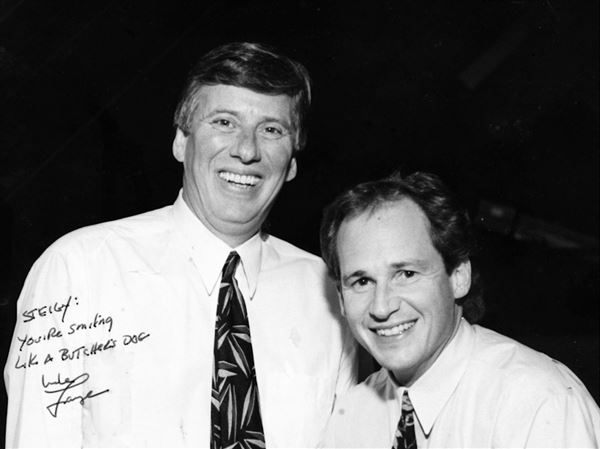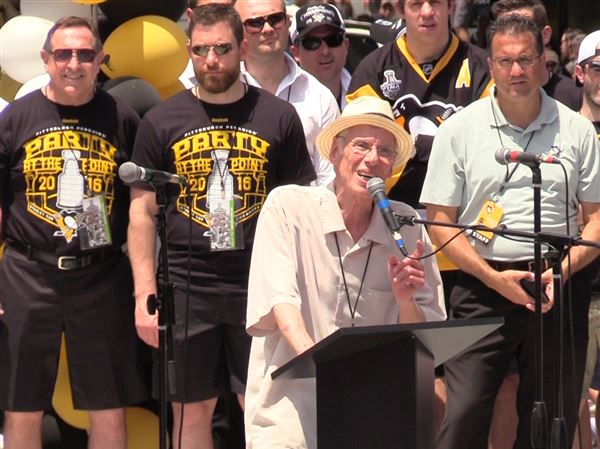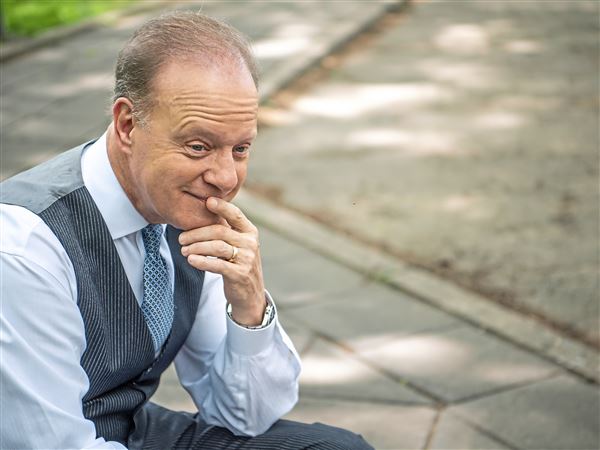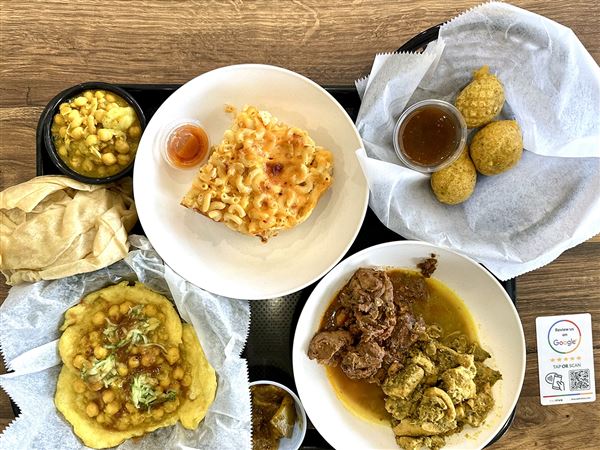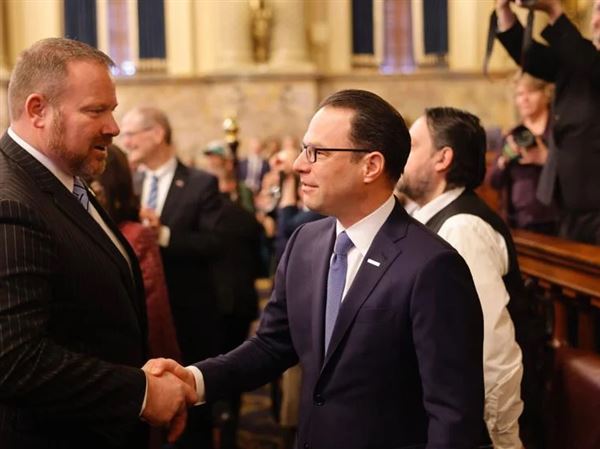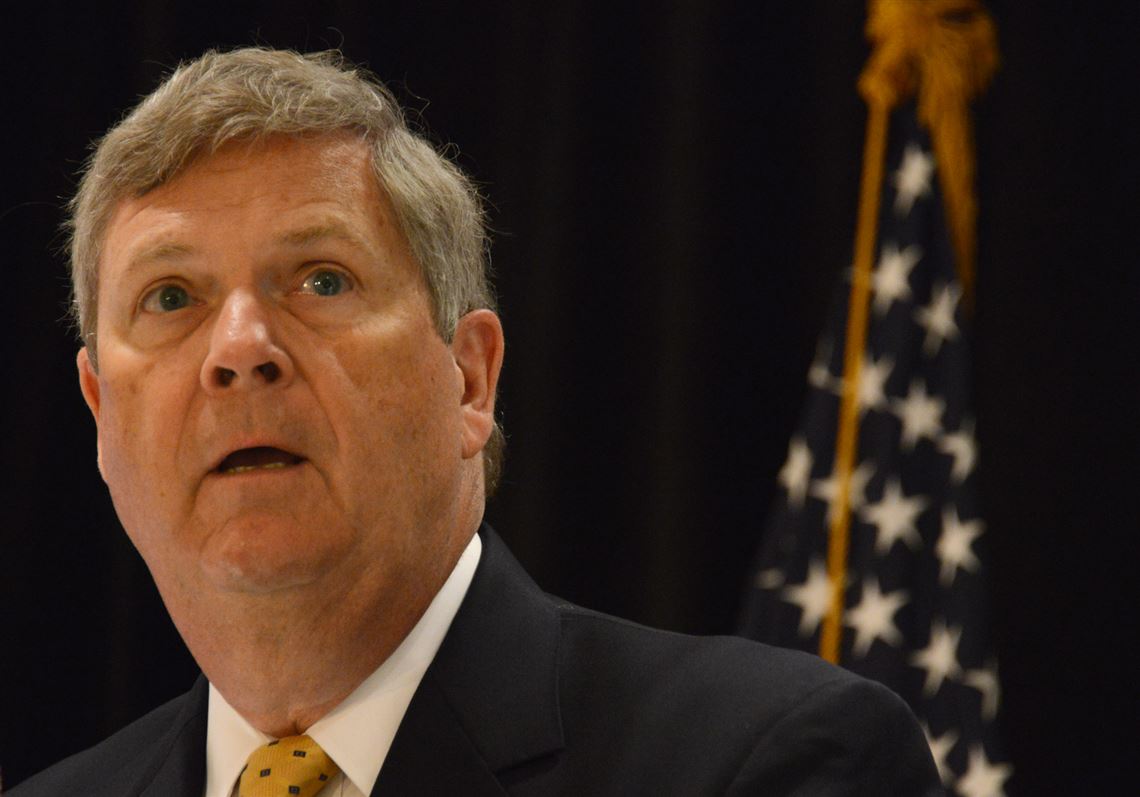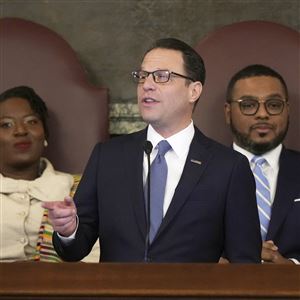WASHINGTON — The first place he called home was a Pittsburgh orphanage. The next could be the U.S. Naval Observatory, the official residence of the vice president.
U.S. Agriculture Secretary Tom Vilsack is said to be on Hillary Clinton’s short list for a running mate.
Others who may be under consideration, according to various news reports, are current Vice President Joe Biden, U.S. Sen. Cory Booker of New Jersey, former Massachusetts Gov. Deval Patrick, U.S. Rep. Xavier Becerra of California, Housing and Urban Development Secretary Julian Castro, Labor Secretary Tom Perez, U.S. Sen. Sherrod Brown of Ohio and U.S. Sen. Tim Kaine of Virginia.
Mr. Vilsack’s office referred calls to the campaign of the presumptive Democratic presidential nominee, which had no comment on vice presidential deliberations.
Choosing Mr. Vilsack would demonstrate Ms. Clinton’s commitment to rural agriculture, alternative energy, economic issues important to small-town communities and the battle against opioid addiction, a personal cause for Mr. Vilsack, who was abandoned by his adoptive mother, who abused drugs and alcohol. She overcame her addiction and late in life reconciled with her husband, and he tells that part of the story as well when he talks about the issue of addiction.
He has experience helping communities heal after gun violence, having led Mount Pleasant, Iowa, through a tumultuous time 30 years ago following the public assassination of Mayor Edd King by an angry resident during a city council meeting. He ran for office at the request of Mr. King’s father, who had heard him speak on a local radio station about raising money for a youth athletic facility.
He later served in the Iowa Senate and then ran a tight race to become the state’s first Democratic governor in 30 years in a narrow victory widely attributed to the help of longtime family friends Bill and Hillary Clinton. Mr. Vilsack had been trailing in the polls until the Clintons began campaigning and fundraising for him.
He came to know Ms. Clinton through his brother-in-law Tom Bell, who shared an office with her in the 1970s when both were attorneys working for the House Judiciary Committee on the Watergate investigation. They remained friends, and Mr. Vilsack served as co-chairman of Ms. Clinton’s primary campaign in 2008.
Ms. Clinton and Mr. Vilsack solidified their friendship during the four years they worked together in President Barack Obama’s Cabinet. The decor in his Washington office includes an ink drawing of Iowa’s Corn Palace — a birthday gift from Mr. Clinton on a wall otherwise full of Pittsburgh sports memorabilia.
Choosing him for her running mate could help Ms. Clinton shore up support in two states — Pennsylvania and Iowa — but it may not make enough of a difference to matter.
“Political science studies have shown that except for 1960 — when Lyndon Johnson really did help [John] Kennedy take the South — there’s never been a modern case where a presidential candidate has won a state he wouldn’t have won without his running mate,” said political scientist Dennis Goldford of Drake University in Des Moines, Iowa.
Vice presidential candidate Paul Ryan couldn’t deliver Wisconsin for Mitt Romney in 2012, and John Edwards couldn’t deliver North Carolina for John Kerry in 2004.
“People still vote for the top of the ticket,” Mr. Goldford said.
“The nominee is important not so much in electoral terms, but in reflecting something about the nominee,” he said. “What kind of people does she think are capable of being president, and what kind would she be seeking out as important advisers?”
Mr. Vilsack, 65, could offer sound policy advice but would not be the kind of attack dog that some candidates look for in a running mate in a tough election.
“He’s a really nice, substantive guy. But that’s not always the role we expect a vice presidential candidate to play,” he said.
That makes Mr. Vilsack a solid, steady choice, albeit one who is not afflicted with a surfeit of pizzazz.
“I think in picking a vice president, ultimately it’s that Hippocratic oath: ‘First do no harm,’ ” and on that score, as well as others, Mr. Vilsack qualifies, Mr. Goldford said.
Mr. Vilsack traces his roots to the Rosalia Foundling Home in Pittsburgh, where he was abandoned days after his birth. He was raised in a tumultuous home in Shadyside and abandoned again by his suicidal, drug-addicted mother. He was raised by a single father who sunk all his money into a failing real estate business but managed to send his son to Shady Side Academy.
Mr. Vilsack attended Hamilton College in New York and then moved to Mount Pleasant, Iowa, the home of his wife, Christie Bell. She is a senior adviser to the U.S. Agency for International Development.
Washington Bureau Chief Tracie Mauriello: tmauriello@post-gazette.com. Chris Potter: cpotter@post-gazette.com.
First Published: July 15, 2016, 4:00 a.m.
Updated: July 15, 2016, 4:22 a.m.


